The 25 Best Movies of 2025 (So Far)

There’s no doubt that the first half of 2025 has been an odd time for the movie industry. Although the complex ripple effects of the 2023 SAG-AFTRA and writer’s strikes have finally begun to dissipate, fresh paranoia regarding the use of ever-more sophisticated A.I. “art” generation has stepped right in as the latest industry boogeyman, even as films from the likes of Succession’s Jesse Armstrong are rushed into production (and release!) in the span of just a few months, to provide real-time satire. At the same time, the power of Gen Z meme culture propelled a film like A Minecraft Movie in the direction of the coveted $1 billion box office mark, but this was still only good enough to give that Warner Bros. title the status of the second highest grossing 2025 feature to date … less than half the absolutely unbelievable $2.2 BILLION earned to date by Chinese animated fantasy feature Ne Zha 2, a film that almost no one in the west has even had a chance to see. So yeah, it’s understandable that it can feel as if the natural order of things has been inverted to some degree.
But rest assured, some things never go out of style. Wes Anderson is still rolling gaily along, for one, providing yet another dose of the sort of whimsy only he can earnestly create in The Phoenician Scheme. Steven Soderbergh demonstrated the chameleonic nature that has defined his career with the combo of a sexy spy thriller (Black Bag) and experimental inversion of the haunted house yarn (Presence). The Paddington series refused to relinquish its charm, even after the departure of writer-director Paul King. We’ve been given some comforting cinematic gifts here, supported by unexpected new finds: Demonic resurrections, robot girlfriends, twisted fairy tales, and one of the most vital additions to vampire canon we’ve seen in the last few decades, courtesy of Ryan Coogler.
There are a lot of films that we’d love to have included on this list, but they either missed the cut-off or don’t qualify because they haven’t yet had any kind of wider release. That includes excellent festival titles such as the likes of Twinless or The Things You Kill, Sentimental Value or If I Had Legs I’d Kick You–these are all titles that you may end up finding on our list at the end of 2025, when more audiences have had a chance to see them. For now, we’ll focus on movies that have already been released, or are about to release wide. The films below are simply presented alphabetically–we’ll save the ranking for the end of the year.
Here are the best movies of 2025 (so far)
![]()
Armand
Director: Halfdan Ullman Tøndel

It’s hard to imagine that in the world of childhood education–a profession filled with a ceaseless parade of thankless tasks–there would be any more thankless or inherently awkward than getting into the middle of a dispute between parents over the behavior of their children. Teachers and school administrators walk a delicate line, chained in place by political pressure and societal expectation, trying to both please everyone and remove themselves personally from controversy at the same time. Director Halfdan Ullmann Tøndel’s Norwegian directorial debut Armand, the winner of the Caméra d’Or for best first feature at the 2024 Cannes Film Festival, thrusts us without warning into one of these scenarios, building steadily from a claustrophobic, if seemingly grounded drama into an increasingly abstract, bestial descent into madness. At times, Armand threatens to lose itself entirely in the fever dream it conjures, like the film itself is going to reach its combustion point and ignite, but it gets just enough of its disquieting atmosphere across to lodge in the memory all the same. —Jim Vorel
Black Bag
Director: Steven Soderbergh
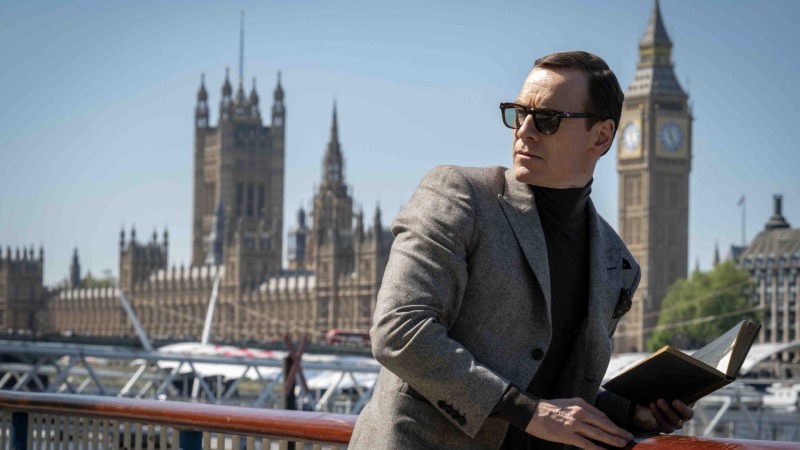
Black Bag provides an opportunity to reflect on how far Soderbergh has come since the stagy confrontations of Sex, Lies, and Videotape. Black Bag strives less openly for provocation, but it’s arguably a sexier, and certainly a sleeker, piece of work. Trusting, as usual, no one but himself to serve as cinematographer, Soderbergh amplifies and blows out every visible interior light source, for images that maintain that little bit of distortion at their edges, even when he’s capturing the well-appointed warmth of George and Kathryn’s home (which still skews sickly yellow, in one of his later-period visual signatures).
Coming off the formal experiment of Presence, as well as the formal experiment of, well, most of his filmography, Soderbergh has inspired some grumbling about when he’ll get back to “real” movies, presumably a bigger-budget studio flex akin to his Ocean’s 11 or Traffic. Black Bag, a Fassbender/Blanchett spy picture from Universal subsidiary Focus Features, would seem to fit the bill; it’s got glamor, humor, and a screenplay from Hollywood mainstay David Koepp (who wrote Presence and Kimi, but also Jurassic Park and Spider-Man). Yet it’s also relatively spare – while the movie is more than dinner scenes, the total cast members number under 20; the running time hovering around 90 minutes – and has the dexterity of a genre workout. The truth is, the experimental Soderbergh and the slick studio Soderbergh have long since merged, and Black Bag, a fusion of marriage and espionage that could have come out 80 years out with a few tweaks for content, is the perfect example. The experiments are the real thing. —Jesse Hassenger
Bring Her Back
Directors: Danny Philippou, Michael Philippou
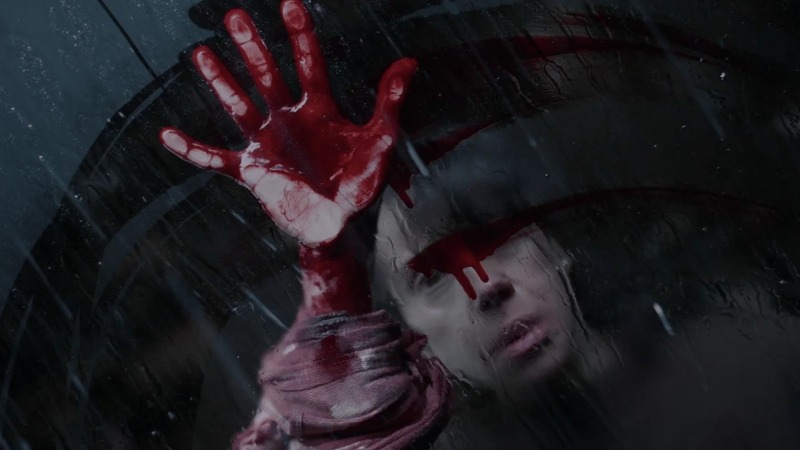
In stark contrast to the (relatively) welcoming multiplex horror of Talk to Me, Danny and Michael Philippou’s sophomore horror feature Bring Her Back makes clear its intention to drag the viewer screaming down into the mouth of hell through sheer, agonizing uncomfortability. This is an absolute endurance run of a watch, a harrowing but equally emotional story laden with that ubiquitous prestige horror tandem of Grief and Trauma, but set apart by just how nasty it commits to being in its delivery of both physical violence (toward children, no less) and psychic misanthropy. On the surface, Bring Her Back is almost a classical fable: Two children, one on the cusp of adulthood, adopted after their father’s passing by a woman who turns out to be something akin to wicked stepmother. But the Australian twin filmmakers add layers of painful complexity to each character’s relationship with each other and with the truth of their circumstances, turning Bring Her Back into an intense psychological minefield, particularly for the mostly blind Piper (Sora Wong), a long-suffering girl who must wade through the perpetual lies she is fed (to both “protect” and deceive) on account of her lack of sight. Stand-out performances from an unhinged Sally Hawkins and especially from deeply disturbing, demonically possessed Aussie child actor Jonah Wren Phillips make Bring Her Back extremely difficult to banish from thought after witnessing it. Even through closed eyes, the audio alone will haunt you. —Jim Vorel
The Colors Within
Director: Naoko Yamada

When people hear the word “anime,” certain images tend to come to mind: Spiky-haired dudes chucking ki blasts at each other, superpowered pirates sailing the high seas, warriors battling demons with flaming swords, and other maximalist battle-oriented spectacles. But of course, there’s much more to this medium than just burly guys slugging it out (although that can admittedly be quite fun), and one of the best examples of this is the work of director Naoko Yamada. Yamada has made a career out of focusing on the little details, as evidenced by her output at the acclaimed studio Kyoto Animation (K-On!, A Silent Voice, Liz and the Blue Bird, and more). Under the magnifying glass of her compositions, each small gesture takes on added significance, blowing up quotidian concerns to match the larger-than-life emotions of adolescence.
Yamada’s latest, The Colors Within, feels like a logical progression of these tendencies, an animated film about teens that is so attuned to its characters that it finds poetry in everyday moments of connection. It’s about music and the way it can tie people together. It’s about the impermanence of the present and the inevitability of high school coming to an end. It’s about discovering the things that make you, you. On the one hand, not much really happens. But in that absence of “stuff happening,” there are sequences so specific and painstakingly rendered, that these particulars cross over into the universal. If you’ve bounced off Yamada’s output in the past, this flick will probably do little to convince you otherwise, but for fellow fans of this introspective style, her latest has that same deft touch. —Elijah Gonzalez
Companion
Director: Drew Hancock
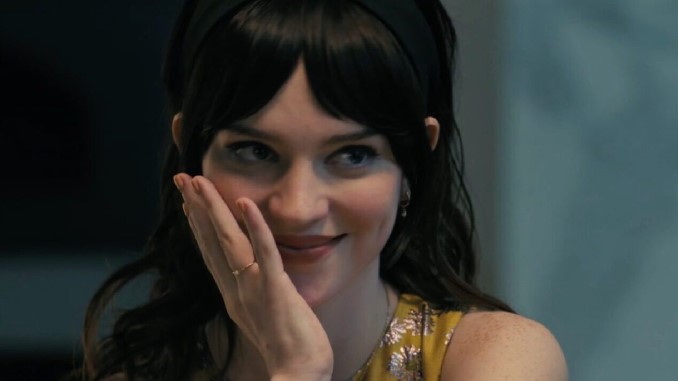
Truth be told, the first 20-odd minutes of Companion are a bit of a tough sell; the performances are stiff, and the stilted interplay between its characters feels assembled from various abandoned CW show bibles. The overall phoniness of it all set my teeth on edge. Fortunately, it’s here that Companion makes its first twist, recontextualizing all the odd and strangely mechanical things everyone previously said or did. Like Barbarian, the film shifts to a different gear, and so does its cast, smoothing out the movie even as Iris’s situation spirals out of control.
As a romantic sci-fi thriller that often feels like a schmoopy response to Black Mirror, its future-as-parable conceit is imperfect. Society, as it exists in this movie, is ill-defined, and Josh’s technology-embracing nice-guy schtick has little nuance. (I mean, “treating women as malleable fawns makes you an asshole” is hardly the most subversive idea to be tossed into a relationship movie, though I did appreciate the sinister edge Quaid applies to his million-buck grin.) By comparison, Iris is the more compassionate, multifaceted character (Thatcher successfully wriggles free of her character’s Stepfordian trappings early on), which, perhaps rightfully, simplifies the film’s conflict. Hancock lets us have fun with the candy-coated easiness of it all. Once Iris breaks free from Josh’s control, Companion becomes a gleefully silly, crowd-pleasing techno-romp, a Turing test valentine for those still learning to better love themselves. —Jarrod Jones
Dangerous Animals
Director: Sean Byrne
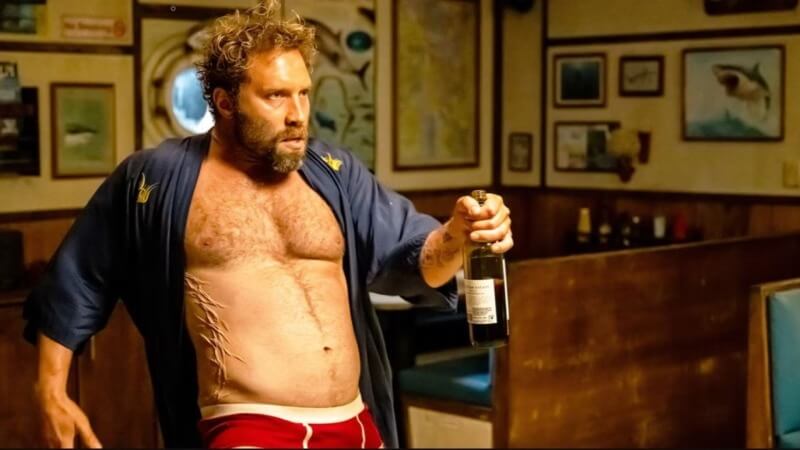
It’s fascinating and enlivening to watch how the fusion of two intensely familiar subgenres–serial killer thriller and shark-starring B-movie–can result in a work that is somehow brimming with life and verve. Like multiplying two negative numbers, the result (in this one instance, don’t get any copycat ideas) becomes positive, rendering buzzy Cannes survival horror flick Dangerous Animals as one of the summer’s most thrillingly visceral surprises. Anchored by a duet of extremely strong genre performances from final girl Hassie Harrison and especially the raw physicality of antagonist Jai Courtney–in a genuinely star-making turn–Dangerous Animals ascends to the top of this particular food chain, a glorified B-movie given appeal beyond its salacious premise through sharp filmmaking and even the occasionally lyrical aside. This is all so much better than “serial killer shark movie” has any right to be.
Nor is the film really any more than it promises: It eschews the need for narrative twists and relies on the elemental simplicity of its metaphor. Hunter vs. hunted. Fisherman vs. fish. Ideological mania vs. the pure determination to survive. We may lump it into the category of “shark movies,” which we’ve previously described as the lowliest of all horror subgenres, but in truth this is less genuinely an entry in that niche than something like 2016’s The Shallows, which represents the gold standard for modern shark films, perhaps the best in the half century since Spielberg’s Jaws launched the era of the summer blockbuster. Dangerous Animals is less purely “shark movie” and instead a tautly made serial killer psychological thriller, which just so happens to thematically weave itself around the grim outline of the ocean’s top predators. In truth, it revolves entirely around the considerably more viciously predatory nature of (male) human beings, as highlighted by a scintillating turn from its villain. —Jim Vorel
Dead Mail
Directors: Joe DeBoer, Kyle McConaghy
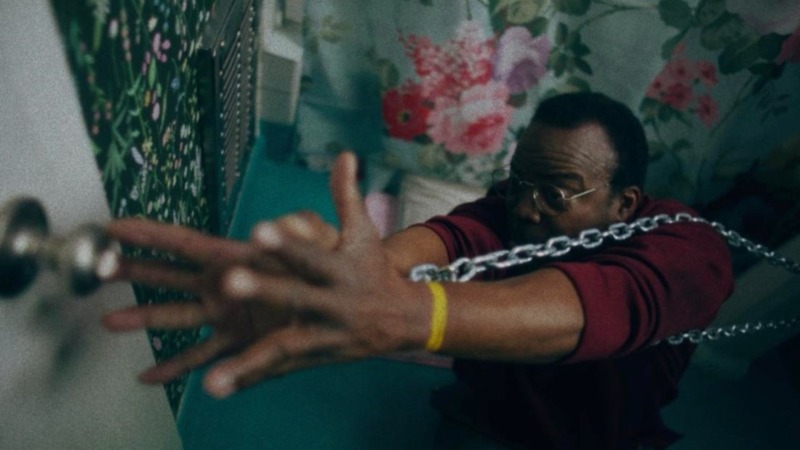
Given its debut on American horror genre streamer Shudder, there will no doubt be a marketing push to play up the horror elements of directors Joe DeBoer and Kyle McConaghy’s Dead Mail, which bears a title that does feel right at home in the genre. This is only understandable, in terms of the prerogative to put butts in the seat for what otherwise might be an especially challenging film to market, but to think of Dead Mail primarily as a “horror movie” is doing a disservice to its deep, abiding weirdness. There are flashes of nail-biting suspense in this utterly unique feature, but for every sharp intake of breath there’s just as much unexpected tenderness and pathos that verges on genuine sweetness, albeit twisted by the kind of pervading loneliness experienced by an obsessive aesthetician who has no peers in our society. Categorizing Dead Mail is the exact sort of detective challenge faced by those sorting letters in the film’s post office dead letter unit: It’s a psychological aesthete crime story with occasional giallo tendencies, a film that will immediately become one of the strangest and most unconventional things on Shudder. And given the company it’s keeping here, that’s saying something.
Dead Mail is a film about obsessive, analytical personalities … but also romantic ones, a consistent throughline that is the ultimate driver of barbaric behavior in an antagonist/protagonist who is motivated, more than anything else, by a love of beauty. We see the same humanist strain of obsession early on as we’re introduced to dead letter investigator Jasper (Tomas Boykin), a solitary man who toils in a 1980s, wood-paneled post office back room to piece together the forgotten cast-offs that find their way to his desk: Letters and parcels missing addresses, names and the data necessary to get them where they’re intended to go. Co-workers like Ann (Micki Jackson) and Bess (Susan Priver) speak of Jasper as if he has some kind of genius or mystical gift in reuniting these items with their intended recipients, missing that what Jasper truly possesses is the sheer determination to apply slow, brute force logic to these problems. When a necklace with deep sentimental value gets lost in the mail, for instance, we see his methods in action as he notes potential identifying traits in the attached letter, and then cross-references them with public listings, narrowing down a large pool of potential answers before cold-calling each house in an attempt to find the recipient. Jasper isn’t some kind of savant; his gift is that he cares enough about what he’s doing, whether that’s his job or hobbies like building and painting tiny models, to be methodical in a way that is beyond most of us in our self obsession. —Jim Vorel
Eephus
Director: Carson Lund
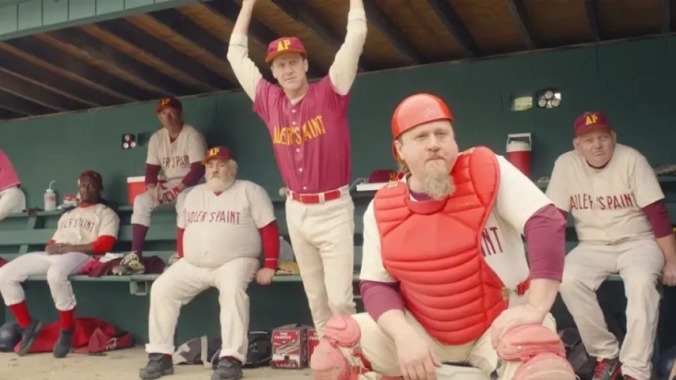
Carson Lund’s feature directorial debut starts and ends on a baseball field, and within the world of the film, that field won’t be there for much longer after the camera fades to black, either. Eephus is an elegy for the last small-town game that will ever be played on Soldier’s Field, the demolition of which is to make way for a new public school. It’s difficult to complain about the construction of an institution that will benefit the local children, but the men who comprise the teams of the Riverdogs and the Adler’s Paint still grumble and mutter to themselves, angry about the “art classes” that will be held on top of what was once a spot to uphold a great American tradition. The film is placed sometime in the 1990s, when people still drove IROC-Z’s, still listened to chintzy local ads on the public radio, and didn’t have quite as many distractions to hinder interest in getting a group of mismatched guys together to play a good old game of baseball.
Eephus—which was co-written by Lund alongside Michael Basta and Nate Fisher, the latter of whom plays the character of Merritt in the film—is named after a type of flashy trick pitch that wouldn’t normally be seen in professional baseball. As Merritt wistfully explains to one of his teammates while benched, an Eephus pitch “stays in the air forever.” It’s slow with a high arc, meant to confuse the hitter and catch him off guard. Of course, Eephus isn’t a film about professional baseball. It’s a film about mostly middle-aged men past their prime, and younger men who show some potential, all of whom have gotten together to play a game that isn’t very good and becomes an overt symbol for hanging onto the past. The “Eephus” pitch is an apt characterization for the film that now shares its name, an odd, surprising story about a baseball game with seemingly little to no stakes, that continues on for long after it should’ve already ended. The two teams aren’t playing to do something silly like save the field, because the construction of the school has already been decided. The stakes are much more personal; when the game ends, something else crucial ends for each of the men as well. —Brianna Zigler
Fréwaka
Director: Aislinn Clarke

Generational trauma is of course fertile ground for modern horror cinema and self-styled “elevated” horror genre offerings, even if the grief-stained trappings of that outline–codified by the likes of Jordan Peele and Ari Aster–have increasingly become the stuff of horror satire in the last few years. These themes are elemental, however, and aren’t truly capable of being fully played out … particularly when they’re given a hook so singular and richly detailed as the setting and characters of director Aislinn Clarke’s Fréwaka. By honing in on a deeply real-feeling, underutilized corner of the world (and its natural language, now infrequently heard), Fréwaka manages to upcycle its story about the trauma of mental health and abuse between mothers and daughters, infusing real-world horrors with hauntingly supernatural, fae overtones. A highly subjective horror experience, Fréwaka rarely gives concrete answers as to the reality of what we’re seeing, but that never makes its potent imagery and outstanding performances any less effective. —Jim Vorel
Friendship
Director: Andrew DeYoung
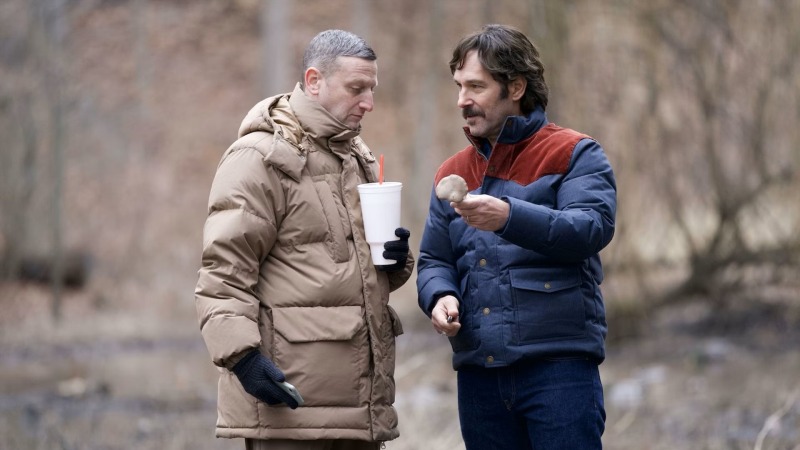
Is there a male loneliness epidemic, or is it more of a male idiocy epidemic? That’s the question poised by Friendship, a new comedy written and directed by Andrew DeYoung, but that is so in sync with star Tim Robinson’s distinct comedic voice that you’d be excused for assuming he made it himself.
Robinson plays Craig, a boring suburban nebbish whose cancer-recovering wife is obviously depressed (Kate Mara), whose teenage son is clearly counting the days until he can leave (Jack Dylan Grazer), and whose direct reports at his middle management job don’t even try to hide their contempt for him. Craig seems blithely unaware of all of this, making mundane small-talk about the latest Marvel movie while his family basically ignores him, and spending his nights in front of the TV. The kind of excitement he didn’t even know he missed enters Craig’s life when he meets his new neighbor, the local weatherman Austin Carmichael, played by Paul Rudd with the mustache and slightly sleazy charm of his Anchorman character. Austin is the too-cool friend of Craig’s dreams, and after only two hangs Craig fantasizes about the life they’ll have together as best friends. If you’ve ever seen any of Tim Robinson’s work before, you know Craig will screw this whole thing up. And he does, in gloriously uncomfortable fashion, systematically ruining every aspect of his life due to his obsession with Austin and the promise of having a cool, adventurous friend. —Garrett Martin
I’m Still Here
Director: Walter Salles
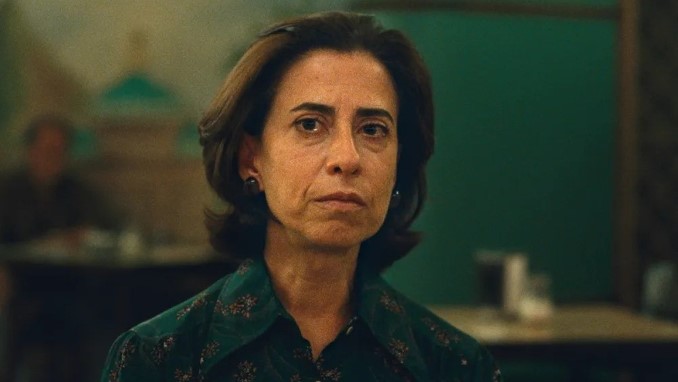
Between the 1964 coup right through to the mid-1970s, hundreds of Brazilian individuals were “disappeared” by the military dictatorship as part of a counter-revolutionary campaign. Among the missing were students and former politicians, rich and poor alike, swept up in the tides of brutality that beset the country with ramifications that continue to resonate to this very day. Along with those who never came home were the many family members that were also picked up and interrogated, undergoing tortuous hardships that would for years mark them with suspicion by the state and leave lasting psychological effects.
Walter Salles’ latest, and most accomplished film, I’m Still Here, allows international audiences into this world of quiet resilience and powerful response to the whims of a dictatorial regime. Following the true-life story of Eunice Paiva (Fernanda Torres) and her family over many decades, this is a powerful indictment of those that caused such harm, and a blistering celebration of one woman’s tenacious drive to seek justice and to preserve the truth for generations to come. —Jason Gorber
Materialists
Director: Celine Song
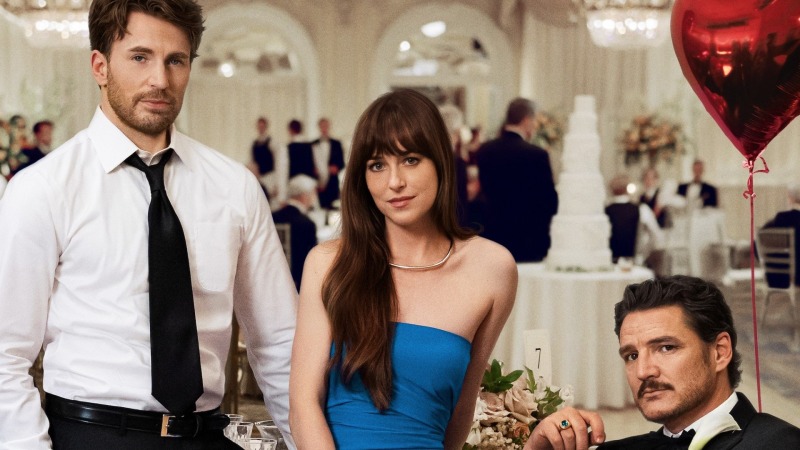
In Celine Song’s 2023 directorial debut, Past Lives, she created a quietly profound meditation on yearning and the different kinds of love that appear and disappear in the disparate chapters of a life. She returns to the eternal topic of love in her follow-up, Materialists, with a pronounced grit and determination to make the much maligned “rom com” genre palatable to even its most dismissive critics. And she does it while dissecting all that’s wrong about how modern humans engage in the pursuit of love.
Song uses the excessively gorgeous clay of Dakota Johnson, Pedro Pascal, and Chris Evans to play out her theories about the awkward pretzels we humans will twist ourselves into while dating to avoid our messy truths of self-assessment, vulnerability and honesty. Using Johnson’s matchmaker Lucy as our guide to navigating the perils of digital-age dating, Song ends up with an intensely romantic film that quells its initial cynicism to earn the magic that comes with the uncontrollable act of falling in love. —Tara Bennett
Mickey 17
Director: Bong Joon-ho
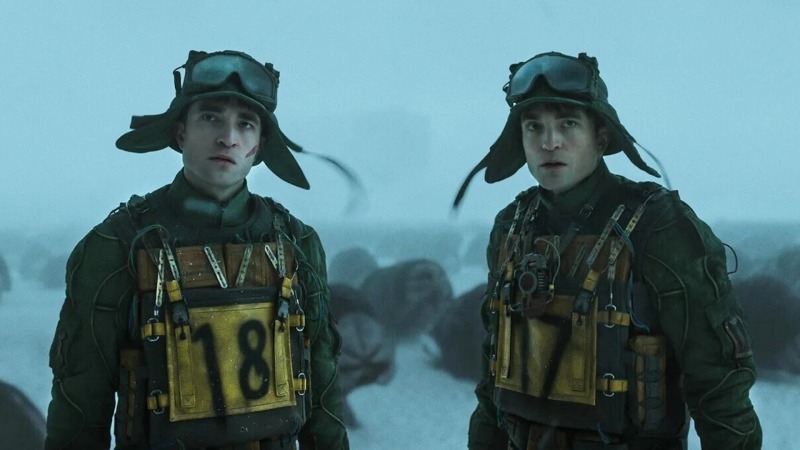
The first thing the audience learns about Mickey Barnes (Robert Pattinson doing a Steve-O voice), the protagonist of Korean auteur Bong Joon-ho’s latest Hollywood film Mickey 17, is that his best friend and space pilot Timo (Steven Yeun) prioritizes the safety of Mickey’s weapon over that of Mickey himself. As an “expendable,” a merciless job he signed up for without reading the paperwork, Mickey cannot fully die. Each time Mickey dies, a team of scientists on the icy intergalactic colony of Niflheim reuploads his personality into a newly cloned Mickey, making him the perfect guinea pig for experimentation. They reprint a number of Mickeys to experiment on anything from new vaccines to nerve gas. By the time the audience meets him, Mickey has died painfully and been reprinted 17 times.
Mickey’s function as a protagonist is less to dismantle the political system of Niflheim and more to take the audience on a journey of personal growth with spectacular sci-fi trappings. The declawed, goofy social commentary and traditionally clean Hollywood ending will no doubt disappoint those who are expecting Joon-ho to declare a take down of the system, within both the context of the film and the studio system that produced it. Mickey 17 is in no way a revolutionary follow up to something like 2019’s Parasite, but it’s an entertaining, well crafted ride. —Katarina Docalovich
Misericordia
Director: Alain Guiraudie
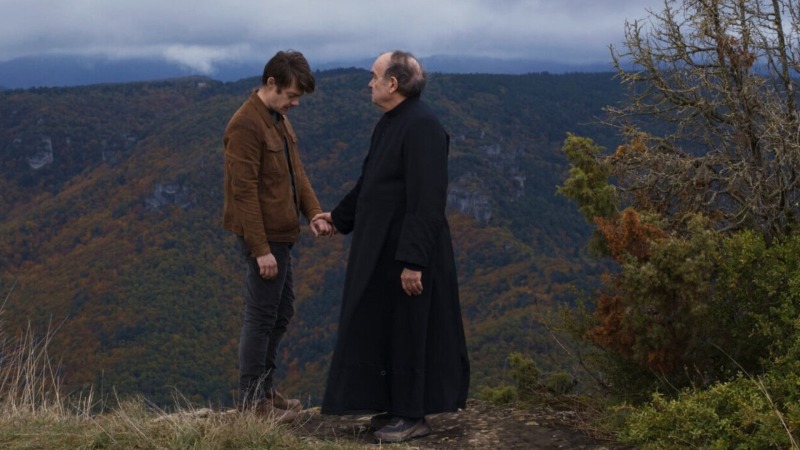
In the French language, the word misericordia roughly translates to “mercy” or “compassion.” To the English-speaking ear, however, the word is perhaps more likely to evoke the thought of “misery” or “melancholia.” This is apt, for writer-director Alain Guiraudie’s rambling, esoteric mix of small-town thriller and black comedy, to the point that it feels somehow intentional despite the English-speaking world not being the film’s first audience–it was theatrically released overseas in the fall of 2024. But it’s impossible to look past the seeming duality, all the same: Any compassionate hospitality extended in Misericordia is undergirded by the melancholia inherent to the prospect of being alone. Every person offering mercy wants something in return, even when their unspoken desires butt up against layers of internalized repression or willful ignorance. They’re all angling for something, whether they know it or not–the only question is how willing they’ll ultimately be to use and be used.
Misericordia drops us primarily into the unknowable shoes of Jérémie (Félix Kysyl), a 30-something man returning to the small French village of his birth to mark the passing of former boss and mentor Jean-Pierre, a respected small-town baker with whom he apparently had an unspoken romantic or sexual attraction. In town, Jérémie is taken in by Jean-Pierre’s widow, Martine (Catherine Frot), and her adult son Vincent (Jean-Baptiste Durand), a former childhood friend (maybe more) who now reads as a distant stranger. There, they collectively mourn the man they knew as Jérémie seems to nurse his wounded notions of what could have been, over dinners with Martine, Vincent and aged local priest Griseul (Jacques Develay). He makes his excuses and prepares to leave, only to be talked into spending the night … but then decides he’s not so sure when and if he’ll be leaving at all. —Jim Vorel
The New Boy
Director: Warwick Thornton

Is it possible to earnestly share one’s faith to someone who has no choice but to listen? If I’m determined to share my religious views with you, it will of course be within your scope of options to simply disregard or disengage. But what about when the target of that proselytization is a small child; one plucked from their own self-contained existence and physically brought under duress to a remote Australian Catholic monastery for orphaned boys? Is it even possible to, in these circumstances, “share” religious learning with this kid, without it being tantamount to an ultimately violent assault on the culture he inherited at birth, the culture now being taken from him? And if he begins to accept some of those inescapable teachings in the interest of embracing the only community available to him … has he in some way betrayed that heritage? These are some of the heady musings at the heart of director Warwick Thornton’s The New Boy, an Aussie religious drama that premiered at Cannes in 2023, finally headed to the U.S. this week in limited theatrical release. Gorgeously shot and intellectually/emotionally provoking, the film tantalizes with transcendent revelations but is simultaneously unbalanced in how it approaches its characters and minimalist storytelling.
Likewise written by Thornton, The New Boy’s sparse outline feels like it could have been a premise poached from the little black books of Stephen King or Guillermo del Toro. A nameless, mysterious Aboriginal boy (Aswan Reid, captivating throughout)–sporting an unusual shock of blonde hair that suggests almost mystical origins–is discovered by British soldiery wandering the desert and violently captured (yes, a boomerang is employed). Treated like a piece of luggage, he’s dumped at the rural monastery run by Sister Eileen (Cate Blanchett), where orphaned boys (and some other Aboriginal children) are given Christian upbringings, taught to speak and write English, and made fit to enter white society. But ah, “the new boy” is a cinematic Special Child, speaking not a word of any intelligible language, but seemingly gifted with a suite of mysterious, supernatural abilities that are as natural to him as breathing. You expect this might result in something like a battle of wills, as Sister Eileen and The New Boy attempt to assert their beliefs and integrate the fantastical abilities of the child into a worldview reflecting their faith. Instead, however, it’s compassion that motivates their interactions, but this has a beguiling, almost seductive effect of its own. Will the good-natured child’s abilities threaten Sister Eileen’s convictions? Or will her kindness and hospitality threaten the boy’s spiritualism, stripping him of his unique gifts the same way the Catholic system tries to remove the “savage” nature of its dark-skinned Aboriginal charges? —Jim Vorel
On Becoming a Guinea Fowl
Director: Rungano Nyoni
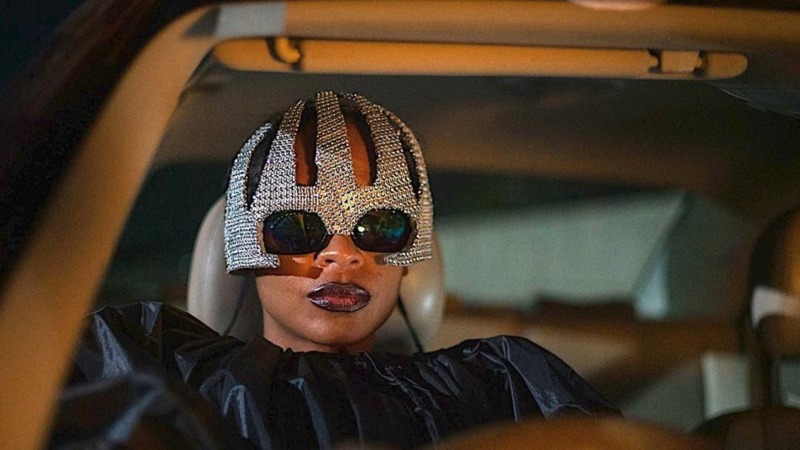
Post-viewing, the title of Rungano Nyoni’s sophomore movie, On Becoming a Guinea Fowl, reads as encouragement as well as instruction: You should follow the bird’s example, and here’s how. “Becoming” is not to be taken literally. Nyoni works in her own sandbox and not the one constructed by Franz Kafka in 1915; her film orbits around the guinea fowl as an inspiring figure, one alluded to more so than present in the frame but whose function on the savannah resonates within the story’s patriarchal systems and insular traditions. If only generations past had a guinea fowl in their midsts to signal the flock of imminent abuses.
On Becoming a Guinea Fowl begins slowly, relaxedly, as Shula (Susan Chardy) casually motors down a backroad under the blanket of night; she’s returning home from a party, gotten up in the iconic trash bag-cum-bedazzled helmet ensemble Missy Elliott rocked in 1997’s “Supa Dupa Fly” music video. With a casual glance out her window, Shula sees her uncle, Freddy, unexpectedly lying prone in the opposite lane.
Shula’s unfussed reaction to Freddy’s demise is motivated by grim, unsavory secrets that rest in her extended family’s soul, corrupting all, from the people doggedly protecting it out of misplaced devotion to the dead, and to custom, to the people who likewise handle the news without so much as a shrug of the shoulder. Nyongi makes the truth explicit as On Becoming a Guinea Fowl’s plot unfolds, and laces the build-up to truth’s revelation with hints at what’s eating Shula, Nsansa, and their cousin Bupe (Esther Singini). —Andy Crump
One of Them Days
Director: Lawrence Lamont
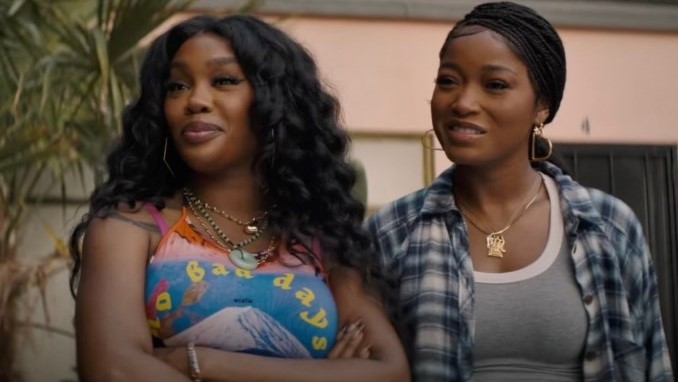
Keke Palmer presumably hasn’t often been strapped for cash since her child-star days – she’s only 31, but has been in show business for 20 years at this point – but it’s just as likely that she understand the hustle that Dreux, her cash-poor character in One of Them Days, goes through on a daily basis. Granted, there’s a lot more struggle to Dreux working long shifts waitressing at a 24-hour chain diner just to afford an apartment in a run-down Los Angeles complex, under constant threat of eviction by her enterprising landlord (who keeps an eye on the gentrification potential of prospective tenants). Still, although Palmer can afford Los Angeles digs, she’s no stranger to the grind. Consider that she’s been so busy hosting stuff, doing guest appearances, doing TV voiceover work, and apparently releasing an album (as well as having a child) that she’s just now getting around to starring in her feature follow-up to Nope, the Jordan Peele movie that seemed poised to break her through to another level of movie acting – two and a half years ago.
One of Them Days, a bright and antic broad comedy, doesn’t carry the same weight as Nope, but it’s also less ephemeral than, say, hosting a redo of Password or showing up for various Jennifer Lopez vanity videos. Unlike those projects, it’s easy enough to imagine this one becoming a beloved and rewatched comfort movie. It follows the reliable one-crazy-day structure, where a couple of straightforward tasks – in this case, pay rent and show up for a job interview – spiral into a digression-heavy schemes and mishaps. The main problem is that Dreux’s roommate and best friend Alyssa (the singer SZA) has delegated the first task to her worthless boyfriend Keshawn (Joshua David Neal), who promptly absconds with the $1,500 owed to their landlord. Now the girls have nine hours to come up with the money, during which Dreux must also nail her interview for a major promotion, hopefully in aid of not running into the same damn problems (however redressed in different clothes) the next month. —Jesse Hassenger
Paddington in Peru
Director: Dougal Wilson

Paul King’s first two films — the delightful Paddington and very nearly perfect Paddington 2 — were a combination of smart filmmaking, joyously creative production design and surprisingly profound messaging. They’re easy to appreciate on every level, from the impressive CGI of the title character to the cast’s committed performances, to the films’ genuinely thoughtful and celebratory exploration of the immigrant experience and what diversity adds to a community.
The third installment of the franchise, Paddington in Peru, is by contrast a bit of a gamble at first glance. King has left, replaced by first-time feature director Dougal Wilson. Instead of London, most of the action takes place in South America, as Paddington (voiced by Ben Wishaw) returns to the land of his birth with the Browns in tow to search for his missing Aunt Lucy (voiced by Imelda Staunton). We’re in new territory in more than one sense; questions about consistency and cultural sensitivity are completely understandable.
Fortunately, Paddington in Peru retains much of what made the preceding two films such triumphs. The cheeky, whimsical humor is still here, and the childlike consideration of the world as a colorful place with endless potential for friendship and adventure remains intact. Most importantly, the movies’ evolving consideration of Paddington’s journey — and how it reflects the experience of cultural assimilation and identity for immigrants and refugees — is still here, and treated with touching consideration. —Abby Olcese
The Phoenician Scheme
Director: Wes Anderson

With a story co-written by long-time collaborator Roman Coppola (who also serves at Executive Producer), it’s Anderson’s unique fingerprints that are all over this adventurous yet unabashedly silly tale. A first time collaboration with the iconic cinematographer Bruno Delbonnel (Amélie, Inside Llewyn Davis), the 1.33:1 aspect ratio and glossy 35mm photography makes you want to lick the screen. Composer Alexandre Desplat adds in another dose of Francophilic exuberance, while many of the settings of the locations (mostly Babelsberg Studio outside of Berlin) give a slight Germanic tease to the décor under the guidance of the exceptional American production designer Adam Stockhausen.
It’s safe to say that Anderson’s ornate style of filmmaking isn’t for everyone, with many simply dismissive of the differences film to film and simply writing them all off as silly stuff. This is their loss, of course, and for those even casual fans there’s so much to admire here for the willing. Although this particular story shares some of Asteroid City’s surrealism and The French Dispatch’s immaculate sense of place, the stakes feel somewhat more lighthearted here despite a narrative that involves hand grenades, karate fights, family feuds, flaming crossbow bolts and discussions of the way to best employ slave labor. —Jason Gorber
Presence
Director: Steven Soderbergh
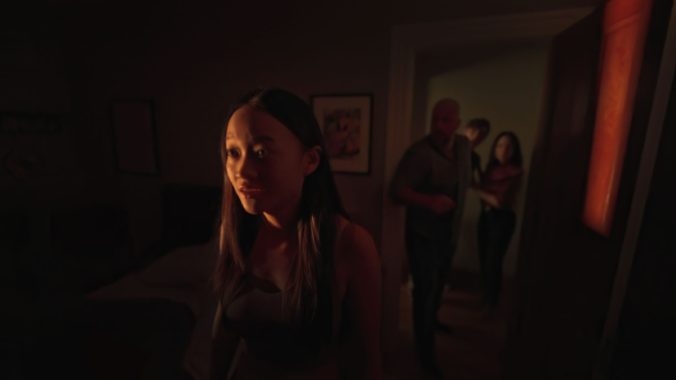
Steven Soderbergh has consistently demonstrated himself as one of the most innovative creatives in American cinema. His 2018 horror film Unsane, famously filmed using an iPhone 7 Plus, elevated the woman-in-peril subgenre with technique and style. His latest, Presence, takes on a similar experimental approach to a well-known horror story. Penned by David Koepp, who previously wrote Soderbergh’s tight and thrilling chamber piece Kimi, Presence is a darkly comic and slow-burn genre film that presents as both a haunted house tale and an exploration of a strained family dynamic—shown entirely through the perspective of its ghost.
Soderbergh and Koepp play with haunted house tropes, such as flickering lights, objects randomly moving around, and hiring a psychic to communicate with the spirit. However, they subvert their simplistic premise to deliver surprising twists. Soderbergh often serves as the cinematographer and editor on his projects, using the pseudonyms Mary Ann Bernard and Peter Andrews as tributes to his mother and father. In Presence, he continues this tradition. The opening introduces the film’s single-location, with Soderbergh adeptly capturing the sensation of the trapped ghost navigating the old suburban home—curiously peering around corners and windows, speeding up and down stairs, or hovering around the new residents. —Jamie Arena
The Rule of Jenny Pen
Director: James Ashcroft

There’s a razor thin line that exists between the privilege, respect and prestige of an autonomous existence, and the degradation and powerlessness of the existence that comes afterward. No one is as far away from the latter as they imagine themselves to be–one economic downturn, accident or illness, and the whole, carefully constructed safety cushion can (and will) unravel in an instant. This is doubly true, of course, for those of advanced age, or those without family who are bound by the rules of polite society to directly care for them. And it’s at that moment, when we’re at our lowest and most vulnerable, that a predator is likely to make its taunting presence felt. That’s what director James Ashcroft’s psychological horror film The Rule of Jenny Pen is all about: The dethroning of a petty tyrant using a blind spot in the system to inflict misery. It may not exactly be deep, or dependent upon layers of metaphor to divine its meaning. The new feature delivers no more and no less than what it promises: A deeply creepy, ultimately engrossing battle of wills between two phenomenal lead performers.
Those performers are Geoffrey Rush and Jonathan Lithgow, the former a steady hand at prestige dramas who is forever welcome in genre circles thanks to his scenery-chewing glee as Captain Barbossa in the Pirates of the Caribbean franchise, and the latter a comedic everyman icon who has nevertheless occasionally played calculating madmen, such as his well-received turn as a serial killer in Showtime’s Dexter. Lithgow is here given a sterling opportunity to flex those diabolical muscles once again, turning in a slavering performance as a nursing home resident who has for years been conducting a sadistic reign of terror over the other enfeebled residents, until he finally runs up against a soul whose sheer stubbornness might be a match for his own. It’s a strong, simple, Hitchcockian central premise: Which will successfully break the other? Be it physically, mentally or spiritually. —Jim Vorel
Sinners
Director: Ryan Coogler
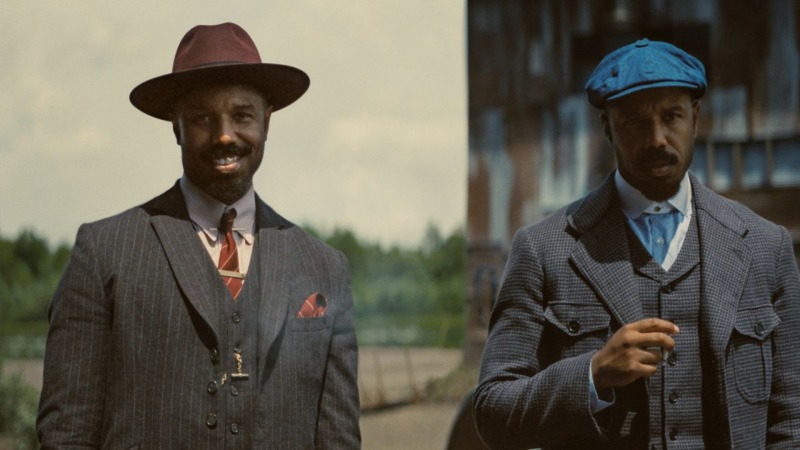
Give it to writer/director Ryan Coogler (Fruitvale Station, Black Panther) for coming at Sinners, his first horror feature, with the intentionality of a PhD student with something to prove. There’s no shortage of existing lazy or derivative vampire movies that he could have easily bested with modest effort. Instead, Coogler cracked the history books, collected his A-list family of collaborators, including composer Ludwig Göransson, production designer Hannah Beachler, director of photography Autumn Durald Arkapaw, costume designer Ruth E. Carter and ever-trusted leading man Michael B. Jordan, to cinematically (with a capital C) transport the audience to a 1930’s Jim Crow Mississippi ripe for all kinds of delicious trouble.
Coogler’s Sinners screenplay is original but it most certainly carries the baton for what Misha Green explored in her mashup of horror, the supernatural and Black oppression in her HBO series, Lovecraft Country (2020). Although that series was ultimately too broad with its ambitions, Coogler wisely stays hyper-focused on just two monsters – the vampire and bigoted Whites who wear hoods. Coogler weaves vampiric metaphors into the societal oppression of the Old South and asks the audience to consider, which is worse? —Tara Bennett
Sister Midnight
Director: Karan Kandhari
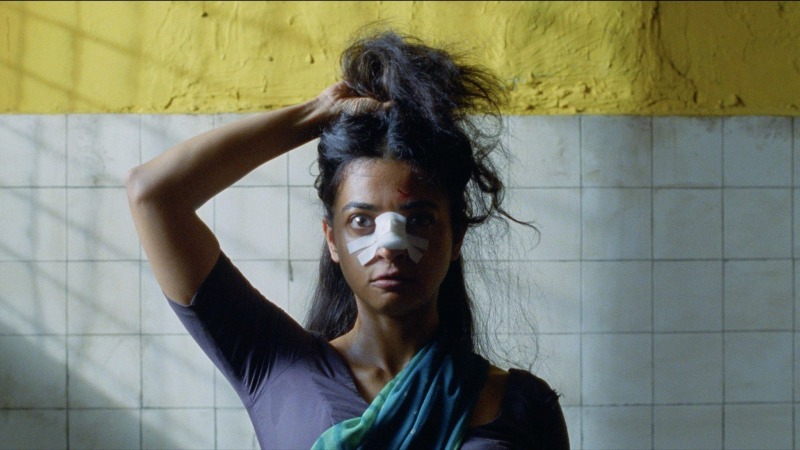
Sister Midnight has the ingredients for a social-realist dirge about a woman’s domestic circumstances that, given the tiny accommodations, limited budget, and lack of transportation, don’t look vastly different from some minimum-security prisons. Writer-director Karan Kandhari, making his directorial debut, gives newlywed Uma (Radhika Apte) the space to seethe, which makes her frustrations both vividly rendered and – sorry, Uma! – funny, in their mordant way. Maybe the apology should be directed to husband Gopal (Ashok Pathak), who bears the brunt of her worst behavior. (And just when she seems to soften to him, things get vastly and unexpectedly worse.) Then again, Uma’s rage at him also feels justified. Even more than his new wife, he seems to assume that a functional marriage will somehow fall into place by instinct.
It is around here that Sister Midnight gradually takes a turn. The movie puts its blinker on, and still, somehow, leaves the chance of surprise when it changes lanes. To even explain what movies this brings to mind might spoil the fun, especially if you’ve only seen the film’s trailer, which leans into the Wes Anderson resemblance and advertises a wicked comedy. The completely spoiler-averse should take this as a parting thought, and be gone: Sister Midnight is wonderful, transfixing in its celluloid-shot cinematography from Sverre Sørdal, which makes its many urban-nightscape scenes particularly vibrant in their long shadows, and wonderfully acted by Apte, whose near-feral aggrievement is oddly winning. It’s one of the best movies of the year so far; leave the review here and make plans to see it. —Jesse Hassenger
The Ugly Stepsister
Director: Emile Blichfeldt
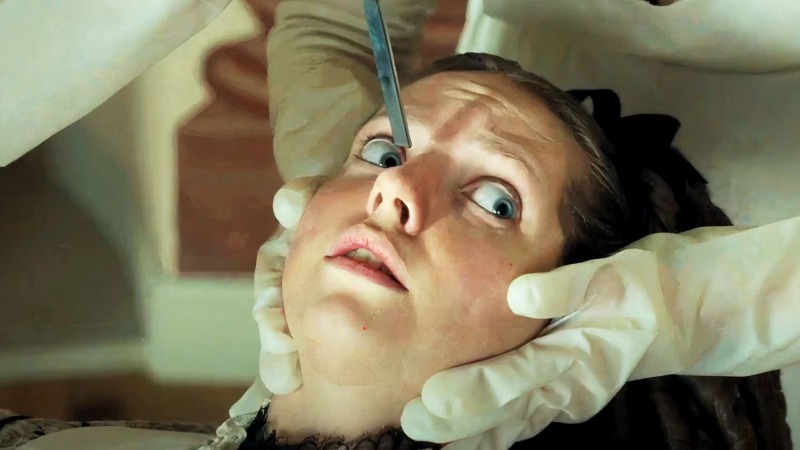
Feverishly funny, gruesomely gross and unrelenting in its satirical critique of both beauty standards and the designation of a cinematic “protagonist,” director Emilie Blichfeldt’s The Ugly Stepsister is a film that had jaws dropping at Sundance this year. A pitch black fairy tale reimagining of the story of Cinderella–conveniently premiering right before the 1950 Disney version of the tale celebrates its 75th anniversary–it reframes its story from the perspective of one of the titular “ugly” stepsisters, but then drives far beyond the idea of physical ugliness to get at the rotting sense of first sympathetic aspiration and later selfish entitlement and delusion that drives us toward our ultimate self destruction. And if there’s a more purely disgusting final five minutes in any other Sundance film in 2025, well … that would have to be a doozy, because The Ugly Stepsister delivers a denouement for the ages.
The Ugly Stepsister is an audacious debut for Blichfeldt as a writer-director, a beautifully captured and often quite funny piece of feminist social satire that builds to a conclusion of grand guignol that will likely leave some of its more squeamish audience members running for the aisles. Suffice to say, it’s the first iteration of Cinderella where one might want to be equipped with a barf bag for viewing, and if that’s not an apt sentiment for 2025, I can’t imagine what would be. —Jim Vorel
Universal Language
Director: Matthew Rankin

In the opening moments of Matthew Rankin’s transcendently absurd comedy Universal Language, a harried teacher arrives to find his snickering class impertinently enjoying their lives in his absence, and lays into the group in his frustration. Spying a young boy in the class inexplicably dressed as Groucho Marx, the teacher lashes out at the self-professed student of comedy: “Your face is disgusting to others. Go stand in the closet.” Surveying the rest of the class, he offers a blunt appraisal: “When I look at you, I see little hope for human survival. No more education. Everyone go stand in the closet!” The kids reluctantly stand and file into the seemingly infinite black void of the closet doors, disappearing from sight as their depressed teacher desultorily drags on a cigarette.
Given this funny but seemingly misanthropic opening, you’d be forgiven for not exactly expecting a lot of heart or earnest emotion from Universal Language. In truth, though, Rankin has crafted something that really is rather remarkable–a deeply weird, delightfully strange, inspiringly imaginative and genuinely heartfelt ode to how identity is shaped by community, connectedness and the uncontrollable randomness of fate. A wholly original fusion of Iranian cinema and esoteric gags about the banality of life in Winnipeg, it’s a totally original conceit from start to finish, and simultaneously one of the most unexpectedly funny and poignant films I’ve seen in recent memory. —Jim Vorel
Vulcanizadora
Director: Joel Potrykus

For a solid stretch of Vulcanizadora, its title remains mystifying, even if you speak the Spanish necessary to separate it from its protagonists’ rusted-metalhead aesthetic. For the two people marching through the Michigan woods (who both fit into the category “boys over 40”), “Vulcanizadora” seems less like it refers to an actual tire shop and more like it was a random word the pair thought looked cool when they wrote it in the death-metal font of the film’s title card. And even when this haze is lifted and clarity sets in, you don’t feel satisfied. You feel like writer/director Joel Potrykus wants you to feel: Amused, wistful, and stuck mulling over his movie’s Beckettian mix of absurdity and futility.
As Potrykus’ unromantic Midwestern losers mature, so too does his filmmaking. But Vulcanizadora still feels like a natural progression of his slime-slacker milieu: At the movie’s heart, there’s still a ridiculous and upsetting idea, thrust upon desperate members of the lower-middle class, seen through to its tragicomic conclusion. And yet, it’s far more subtle in its images and emotions than the allegorical stuckness of Relaxer or the monstrous swindler of Buzzard, both of which also star Joshua Burge in various states of unravelment. —Jacob Oller